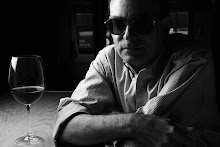In the summer of 1962, American-International released another exploitation film, Panic in Year Zero. The movie exploited the period’s commonly held fear of thermonuclear war. The Cold War was at its height and would reach its zenith in October with the discovery of offensive missiles placed in Cuba. But in the summer of ’62, there was Panic in Year Zero to tell us what surviving a nuclear Armageddon might be like.
In a terse 92 minutes, the movie is nothing less than a how-to primer on how to survive a nuclear war. Ray Milland, who also directed the movie, stars as a middle-class, middle-aged American who is about to embark on a fishing trip with his family. His wife is played by Jean Hagen, looking like a real early sixties housewife. One can’t believe that this is the same Jean Hagen who played Lina Lamont, the immortal screechy-voiced villainess of Stanley Donen’s Singin' in the Rain and Danny Thomas’ first wife on Make Room for Daddy. And Ray Milland, bullying and humorless here, seems light years away from the charmingly confused military officer he played opposite Ginger Rogers in Billy Wilder’s hilarious and touching directorial debut, The Major and the Minor (1942). In the movie, he and Jean Hagen have two teenaged children played by Mary Mitchel and Frankie Avalon.
At the time, Frankie Avalon was a teen singing sensation, having come out of that small talent-rich section of South Philadelphia that also produced Fabian, James Darren and Bobby Rydell. Before this movie, Frankie had already appeared in small roles in John Wayne’s The Alamo and Irwin Allen’s Voyage to the Bottom of the Sea. (As an aside, canny Wayne often cast young pop singers in his movies to attract the youth crowd, which is why you get Ricky Nelson in Rio Bravo, Fabian in North to Alaska and Bobby Vinton in Big Jake). Frankie Avalon would go on to appear in several American-International beach movies with former Mouseketeer Annette Funicello. This series would reach its apotheosis with Beach Blanket Bingo (1966). But in Panic in Year Zero, Frankie plays it straight and does a good job as a teenager (he was 23 at the time) dealing with the harsh realities of life after a nuclear conflagration has devastated America.
Throughout the movie, Ray Milland and Jean Hagen carry on a running debate about the importance of collective civilization versus individual survival. After an atomic bomb devastates their home in Los Angeles, Milland elects to head for the hills and remain there until order is restored. He becomes single-minded in providing for his family and protecting them from looters, rapists and marauders in the form of three hot-rod-riding hoods. Milland is absolutely ruthless in insuring the survival of himself and his family, even if it means risking the complete alienation of his wife. When two of the hoods try to rape Milland’s daughter in the woods, he and Frankie Avalon track them down and cold bloodedly exact their own form of justice. The odd thing about the movie is that it never attempts to color in Milland’s background to show how he makes the almost instantaneous transformation from civilized man to committed survivalist (two decades before the term was even coined). He is fully as resourceful and self-righteously determined as any hero created by science fiction author Robert A. Heinlein, or Robert Neville, the main character of Richard Matheson’s I am Legend, itself a how-to primer on how to survive a vampire plague (and first filmed by American-International as The Last Man on Earth with Vincent Price in 1964).
In the end, Panic in Year Zero is a movie whose low budget roots glaringly come through at times, which leads to some laughable faults in continuity. (The family car is towing a trailer. Yet, in scenes set inside the car, the rear projection seen through the car’s back window clearly shows the highway unwinding behind them.) But the low budget also helps concentrate the screenplay, whose narrative is never off the focus of Milland’s increasing obsession in keeping his wife and children safe from harm, even if it means destroying the fragile emotional bonds of the family unit. The movie begins and ends with close-ups of a car radio. This radio provides entertainment in the form of popular music and information in the form of updates on how America is responding to the nuclear attack. The radio is the family’s sole link with what remains of civilization, and in the summer of 1962, the radio that made Frankie Avalon a star also served notice that America had other, more important things on its mind.
Saturday, July 18, 2009
Subscribe to:
Post Comments (Atom)

No comments:
Post a Comment